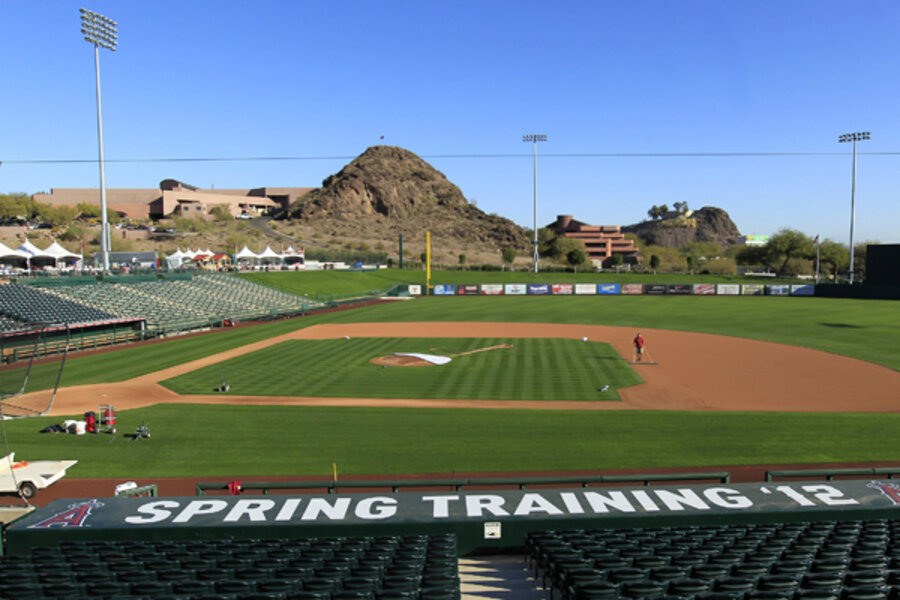Teams began holding organized spring camps in warm-weather locations in the late 1800s, but the placement of these generally changed from year to year. The Baseball Almanac credits the New York Giants with establishing the first permanent spring training site in 1908, in Marlin, Texas, where the team trained until moving to Gainesville, Fla., in 1919.
Baseball spring training: The facts, from history to cheap seats
Spring training is when players shed the winter rust by limbering up on warm, sun-baked diamonds, sign autographs galore, and provide hope that this may be their team’s year. The anticipation of this annual ritual can be so great that in Boston, for example, fans show up at Fenway Park just to watch the equipment trucks being loaded and sent on their way to Florida. Pitchers and catchers started arriving this year a week and a half ago, with most of the rest of the players reporting for drills within the last five or six days. As preseason games between major-league teams begin on Saturday, here are a few facts to give you some background on spring ball.

History




